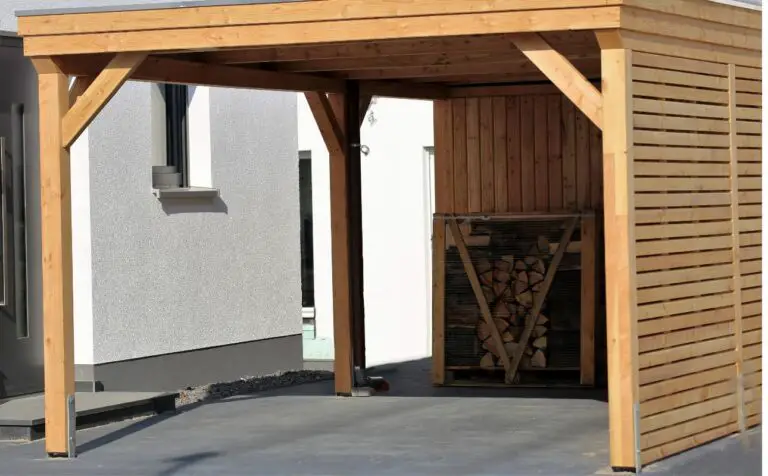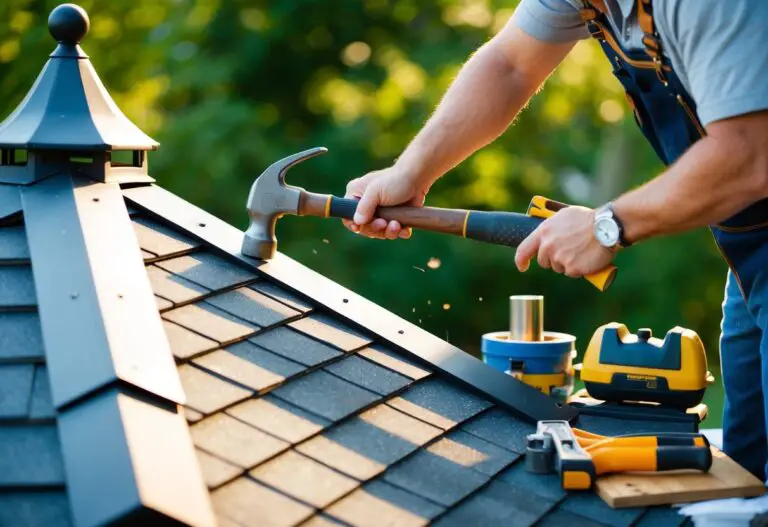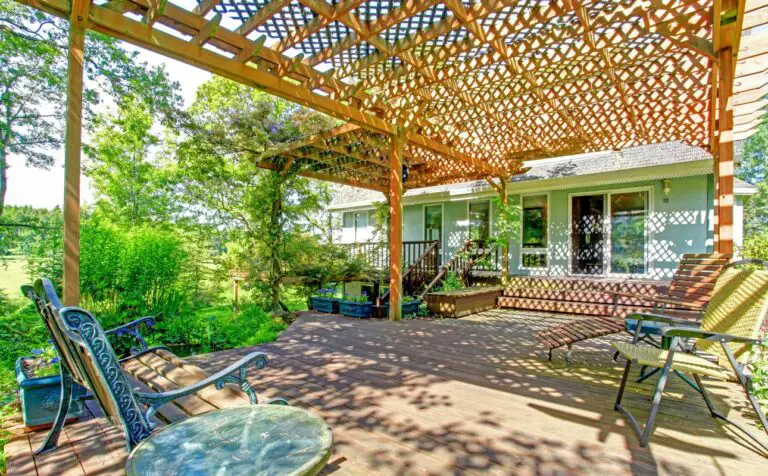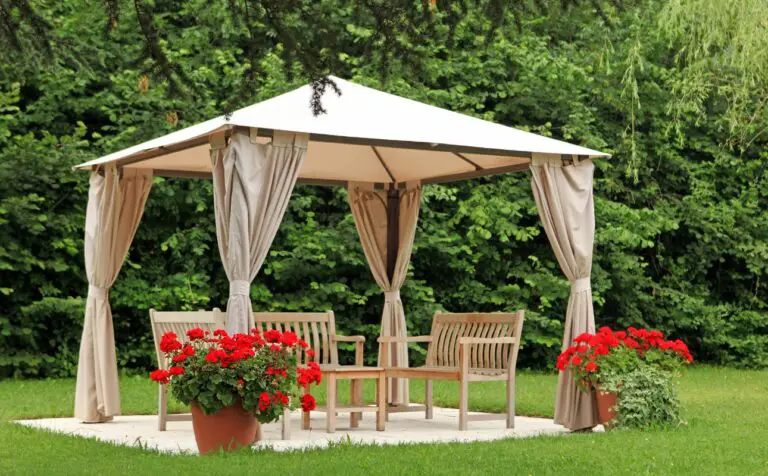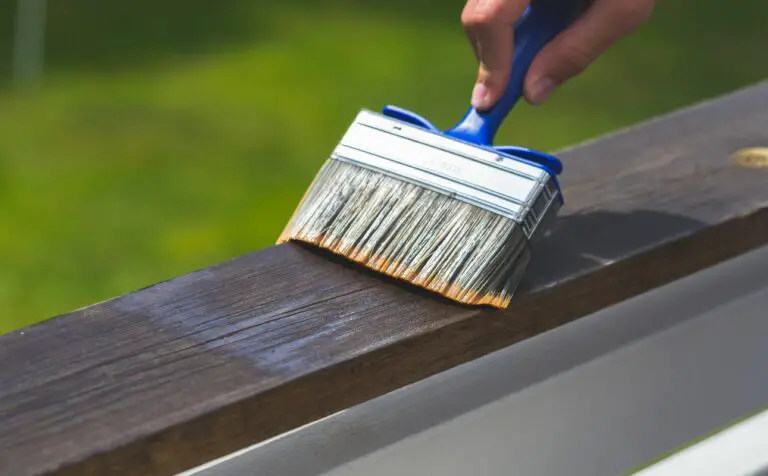Are you tired of your pergola swaying in the wind or during a storm? A wobbly and unstable pergola not only detracts from its beauty but can also pose a safety hazard. Lucky for you, there are several ways to prevent your pergola from swaying.
One common cause of a shaky pergola is poor anchoring. If the posts aren’t securely anchored into the ground or if the footings are too small, the structure will sway even with moderate winds.
In this article, we’ll explore different methods for ensuring that your pergola stays put, including reinforcing post footings, adding cross bracing, using tension rods, and more. With these tips and tricks, you can enjoy a sturdy and stable pergola all year round.
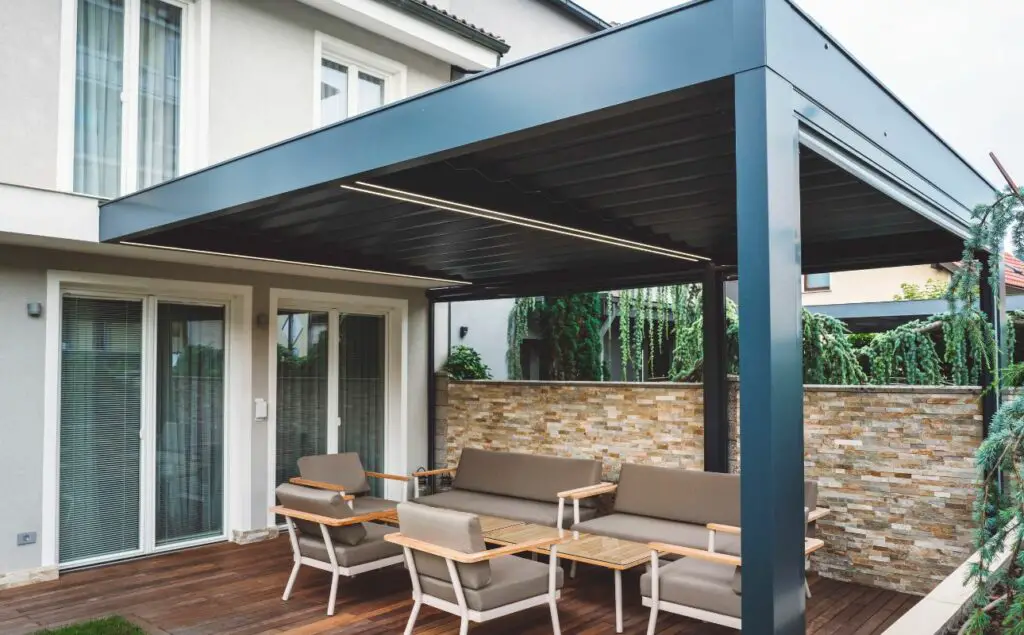
Identifying The Causes Of Pergola Swaying
One of the most common mistakes is using lightweight materials that cannot withstand strong winds or heavy loads. This includes thin and flimsy posts, beams, and rafters.
Another mistake is not securing the pergola properly to its foundation or adjacent structures such as a house or deck. If your pergola isn’t anchored firmly enough, it can easily sway in windy conditions.
Other factors that can contribute to pergola swaying include improper spacing between support posts, uneven ground surface, and poor-quality construction materials.
Ensuring Proper Anchoring Of Pergola Posts
Your posts are the foundation upon which your entire pergola rests, so making sure they remain firm and secure is essential. Proper anchoring techniques can provide stability and prevent swaying.
Here are three ways to anchor your pergola posts:
- Concrete footings – Dig a hole at least 4 feet deep and pour concrete into it around your post. Allow it to dry completely before continuing with construction.
- Post brackets – These metal brackets allow you to attach your posts securely to an existing patio or deck using bolts.
- Ground anchors – Drive steel rods through holes in the base of each post and then use cables or wires attached to ground anchors buried beneath the soil on either side of the structure.
Strengthening Post Footings With Concrete
One effective solution to stabilize your structure is by strengthening the post footings with concrete. Not only will this make it more sturdy, but also help prevent any potential damage or accidents.
Before pouring the concrete, ensure that a proper soil analysis has been conducted. This will determine if the ground can handle the weight and pressure from the added concrete.
Concrete pouring techniques should also be considered when doing this project as it affects how strong and durable the final product would be.
With these in mind, pour the concrete mixture around each post footing until it reaches just below ground level.
Allow time for drying before putting back any necessary hardware or decorations onto your newly stable pergola.
Adding Cross Bracing To Pergola Structure
To add cross bracing to your pergola, there are several alternative solutions and various types of bracing materials available.
One option is to use wooden braces that are installed diagonally from one corner post to another, creating an X-shaped pattern. This method not only strengthens the corners of the pergola but also creates a visually appealing design element.
Another option is using metal brackets or cables for additional reinforcement. These options may require professional installation for optimal results.
Wooden Braces:
- Choose sturdy lumber such as cedar or pressure-treated wood.
- Measure and cut each brace at a 45-degree angle to fit snugly between posts.
- Use screws or bolts to attach them securely to both posts.
Metal Brackets:
- Select heavy-duty steel brackets designed specifically for pergolas.
- Attach brackets with lag bolts or screws directly into the beams and posts.
- Ensure proper alignment before tightening all connections tightly.
Cable Bracing:
- Install high-tension cables diagonally across opposite sides of the pergola frame
- Use turnbuckles and cable clamps at attachment points
- Tighten until taut
Using Tension Rods For Extra Support
Tension rods are typically used in construction to add stability and prevent flexing, making them ideal for reinforcing your pergola. By installing tension rods at strategic points along the structure, you can help distribute weight evenly and reduce any wobbling or shaking.
When choosing materials for your tension rods, there are several things to consider.
- Make sure that the rod itself is strong enough to handle the load it will be supporting. Stainless steel or galvanized steel are good choices as they are sturdy and weather-resistant.
- You’ll also need to choose hardware that matches the size of your rod and provides a secure hold on both ends.
- Adjusting the tension is key in getting the most out of your new reinforcement system.
Take care not to over-tighten your rods, as this could cause damage to your pergola over time. Instead, adjust them until they feel snug but still allow some flexibility in the wood beams.
Installing Wind Panels Or Screens
Let’s start by talking about installing wind panels, then we can move on to installing windscreens.
- Installing Wind Panels
Wind panel effectiveness depends on proper installation techniques, so make sure to follow instructions carefully.
- Install vertical posts along the perimeter of the pergola and attach the panels securely between them.
- Use a track system that allows the panels to slide open or closed as needed.
With these techniques, you can enjoy a sturdy and stable outdoor living space even on windy days.
- Installing Wind Screens
There are different types of windscreens available on the market, such as retractable or fixed screens made from materials like mesh or vinyl.
If you’re considering a DIY installation, keep in mind that it may require more time and effort compared to hiring a professional installer.
- Going the DIY route can also save you money and allow for customization options.
- Having a professional install your windscreens can ensure proper fitting and functionality.
Ultimately, weigh out your options and choose what works best for you and your budget.
Considering The Impact Of Pergola Design
The design should be sturdy enough to withstand strong winds and harsh weather conditions.
- You need to consider the type of material used for your pergola. While wood is a popular choice due to its natural look, it may not be the most durable option.
- Steel or aluminum frames are stronger and more resistant to adverse weather conditions. Incorporating diagonal bracing into the design can help prevent swaying by adding extra support.
- Ensuring that all joints are tightly secured will also contribute to the stability of your pergola.
Maintaining Your Pergola For Long-Term Stability
Regular maintenance and material selection are key factors in maintaining the stability of your pergola. With regular inspections, you can identify any potential issues early on and take preventive measures to avoid more significant problems down the line.
- Check for loose bolts or screws, damaged wood or metal components, and signs of rust or corrosion.
- Selecting high-quality materials that are appropriate for your climate and intended use is crucial for long-term stability.
- Consider using pressure-treated lumber or durable metals like aluminum or steel. You may also want to invest in additional support structures such as footings or braces if your pergola is particularly large or located in an area with high winds.
The Bottom Line
While sandbags or weights may provide temporary stability, it is recommended to have a professional install the structure with proper footing and anchoring.
Adding a second layer of cross-bracing can further enhance its strength. It’s important to regularly check and tighten bolts and screws to ensure that the pergola remains sturdy over time.
And when considering wind panels or screens, opt for durable materials such as vinyl-coated polyester or PVC mesh that are designed specifically for outdoor use.
With these tips in mind, you can enjoy your pergola without worrying about wobbling or swaying during gusty weather conditions.
FAQ
Can I Use Sandbags Or Weights To Prevent My Pergola From Swaying?
Yes, sandbags or weights can be used as an alternative anti-sway method for pergola stability maintenance. Placing heavy objects on the base of each post can help prevent the structure from swaying during strong winds or other external forces.
Is It Necessary To Have A Professional Install The Pergola To Ensure Stability?
While it may seem like the safer option, many homeowners opt for DIY installation. Common mistakes made during installation can lead to swaying and instability in the future.
It’s important to carefully follow instructions and use appropriate tools and materials when installing your pergola.
Can I Add A Second Layer Of Cross Bracing For Extra Support?
The benefits of cross-bracing include preventing swaying and increasing overall strength. This option may be more cost-effective than hiring a professional to install the entire pergola or making major structural changes.
Keep in mind that while adding a second layer of cross-bracing can help stabilize your pergola, it’s important to consult with an expert before undertaking any modifications to ensure safety and compliance with building codes.
How Often Should I Check And Tighten The Bolts And Screws Of My Pergola?
Checking and tightening bolts and screws regularly can prevent potential hazards caused by loose connections, which are signs that indicate the need for immediate attention.
To ensure a secure structure, use tools such as a socket wrench or pliers and check all fasteners every few months or after heavy storms.
What Type Of Material Should I Use For Wind Panels Or Screens To Prevent Swaying?
Wind panels or screens made of sturdy materials like metal or polycarbonate plastic can be attached to the sides of the pergola to provide extra support and stability.
It’s important to choose high-quality materials that will withstand harsh weather conditions and last for years to come.

